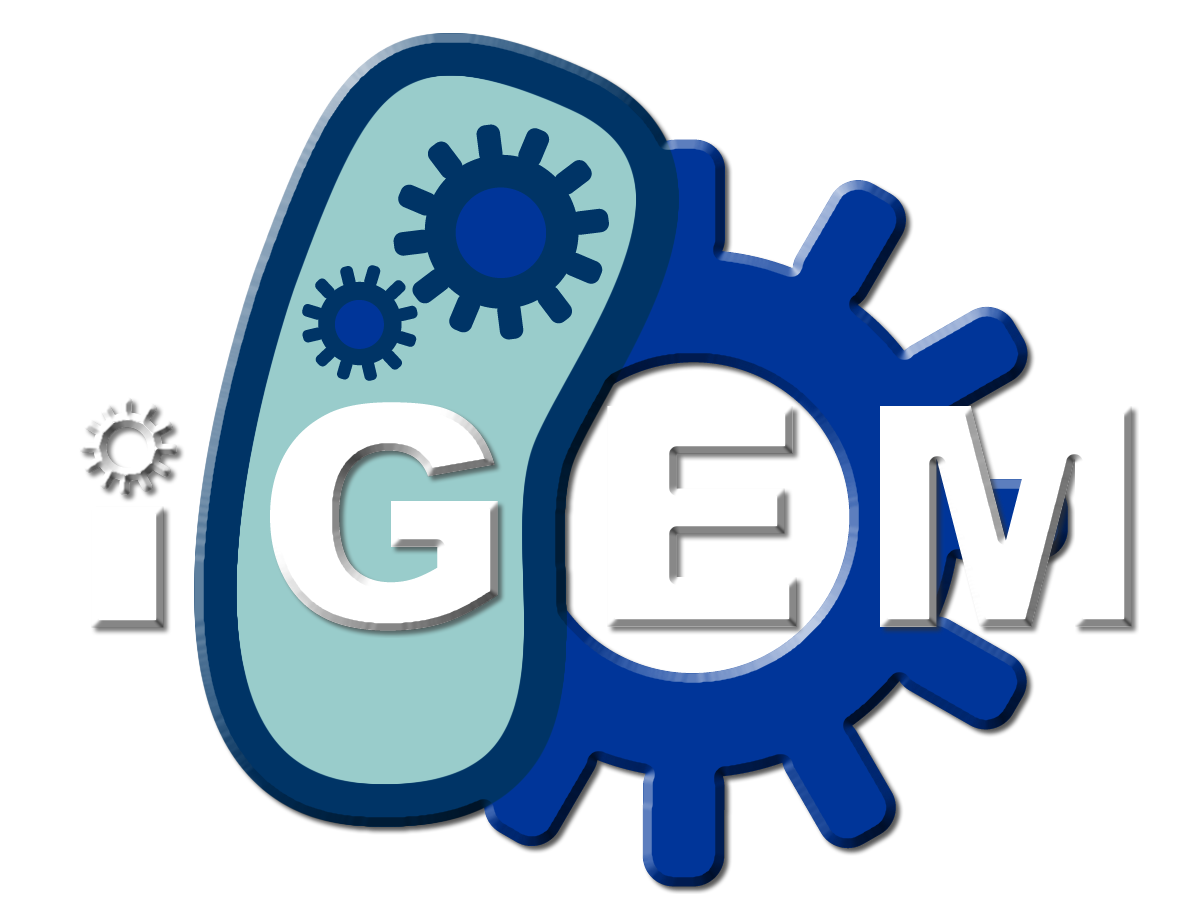Team:NC School of Sci Math/Project
From 2013hs.igem.org
Jack Allen (Talk | contribs) (Replaced content with "{{NCSSM_iGEM_13| Content= __NOTOC__ ==Project Proposal== Type Here 800px ===References=== }}") |
|||
| Line 4: | Line 4: | ||
==Project Proposal== | ==Project Proposal== | ||
| - | + | Our multi-input logic gate will produce a colorimetric output for nitrates, phosphates, and toxic chemicals such as hydrogen sulfide and sodium hypochlorite, which are all detrimental to the function of septic tanks. The diagram below shows the genome of our E. Coli plasmid that will produce a unique colorimetric output based on the presence of the targeted metals in the local environment. | |
| + | |||
| + | Figure 1 (on left). MG1655 E. coli plasmid after insertion of the genetic elements necessary for expression of fluorescent proteins based on presence of phosphates, nitrates, or toxic chemicals. Two of the three FPs in the plasmid are regulated by a different promoter that is activated in the presence of the targeted substance. Activation of the CreA (phosphate activated) and PyeaR (nitrate activated) promoters results in the translation of GFP and BFP proteins, respectively. The third FP, mCherry (red FP), is transcribed constitutively, such that any chemical toxic enough to kill the E. coli (such as hydrogen sulfide or sodium hypochlorite) will result in a detectable decrease in this color. The appropriate FP genes will be inserted at the BamI restriction site, as shown. The Ampicillin Resistance Gene allows positive selection of plasmids that have been transformed as intended, and is inserted at the EcoRI site as shown. | ||
| + | |||
| + | Figure 2 (on right). To sense these colorimetric outputs, the Google ADK (Accessories Development Kit) can be used. The Google ADK can be modified to detect the colorimetric outputs from the E. coli plasmid. The device monitors color by detecting the amount and type of light absorbed across a known difference. A prototype of the device is shown in Figure 2. The chemicals present and their approximate concentrations based on absorbance of color are then sent through the Google ADK to the septic tank owner to notify them that an inspection of the tank is needed. In addition, if the red color that is continually produced by the E. coli bacteria is diminished, the modified Google ADK will notify the septic tank owner to recommend tank inspection, as this decrease in mCherry protein is a result of chemicals (ex. sodium hypochlorite, a key ingredient in bleach) killing the E. coli. The Google ADK will serve as a detector of the colorimetric output and serves the main purpose of communicating data to the tank owner. | ||
Revision as of 02:40, 4 June 2013
Home Team Project Details Lab Notebook Results Human Impact Biosafety Acknowledgments Official Team Profile
Project Proposal
Our multi-input logic gate will produce a colorimetric output for nitrates, phosphates, and toxic chemicals such as hydrogen sulfide and sodium hypochlorite, which are all detrimental to the function of septic tanks. The diagram below shows the genome of our E. Coli plasmid that will produce a unique colorimetric output based on the presence of the targeted metals in the local environment.
Figure 1 (on left). MG1655 E. coli plasmid after insertion of the genetic elements necessary for expression of fluorescent proteins based on presence of phosphates, nitrates, or toxic chemicals. Two of the three FPs in the plasmid are regulated by a different promoter that is activated in the presence of the targeted substance. Activation of the CreA (phosphate activated) and PyeaR (nitrate activated) promoters results in the translation of GFP and BFP proteins, respectively. The third FP, mCherry (red FP), is transcribed constitutively, such that any chemical toxic enough to kill the E. coli (such as hydrogen sulfide or sodium hypochlorite) will result in a detectable decrease in this color. The appropriate FP genes will be inserted at the BamI restriction site, as shown. The Ampicillin Resistance Gene allows positive selection of plasmids that have been transformed as intended, and is inserted at the EcoRI site as shown.
Figure 2 (on right). To sense these colorimetric outputs, the Google ADK (Accessories Development Kit) can be used. The Google ADK can be modified to detect the colorimetric outputs from the E. coli plasmid. The device monitors color by detecting the amount and type of light absorbed across a known difference. A prototype of the device is shown in Figure 2. The chemicals present and their approximate concentrations based on absorbance of color are then sent through the Google ADK to the septic tank owner to notify them that an inspection of the tank is needed. In addition, if the red color that is continually produced by the E. coli bacteria is diminished, the modified Google ADK will notify the septic tank owner to recommend tank inspection, as this decrease in mCherry protein is a result of chemicals (ex. sodium hypochlorite, a key ingredient in bleach) killing the E. coli. The Google ADK will serve as a detector of the colorimetric output and serves the main purpose of communicating data to the tank owner.
 "
"



